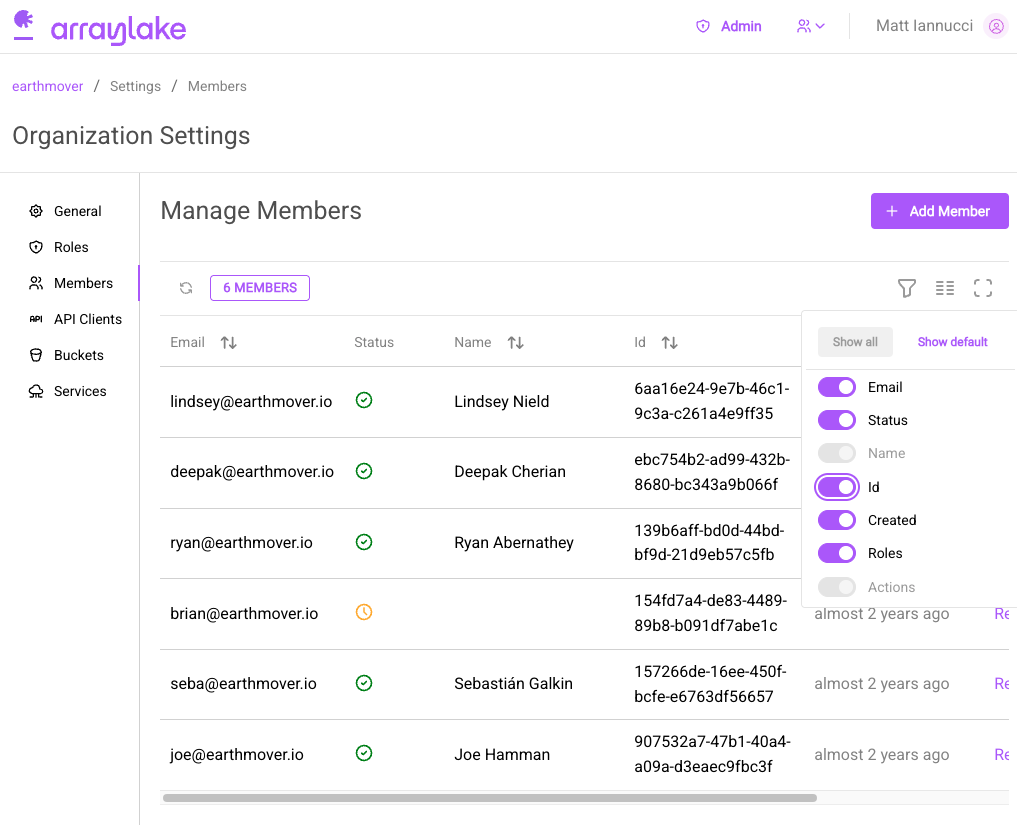Google Cloud Storage

Arraylake works great with Google Cloud Storage. You can use Google Cloud Storage as the storage location for your organization..
To use Google Cloud Storage with Arraylake:
-
Create a new bucket (Google Cloud docs). For example, the bucket could be named
my-arraylake-bucket. -
Create a new
BucketConfigto store the configuration for this bucket using either the Arraylake Python client or web app:
- Web App
- Python

Add a new Google Cloud Bucket
from arraylake import Client
client = Client()
client.create_bucket_config(
org="earthmover",
nickname="my-google-bucket",
uri="gs://my-arraylake-bucket",
)
- Before using Arraylake, make sure you are logged in with valid credentials, e.g.
gcloud auth application-default login
That's it! You're ready to create a Repository! 🎉
Enable bucket logging (Optional)
Optionally, you can enable Usage and Storage Logs to track access to your bucket. This is useful for auditing and debugging purposes. These access logs are updated asynchonously over time and do not provide realtime tracking of bucket activity, but rather a historical log of access and operations on the configured bucket. Follow this guide to setup logging for your arraylake bucket in the Google Cloud Console. Once enabled, logs can be downloaded using the Google Cloud console, APIs, or CLI tooling.
These bucket logs are not enabled by default. Enabling them requires additional configuration and may incur additional storage costs. Consider using Lifecycle management to optimize your costs for your needs.
To enable auditing bucket access via Arraylake, a custom user agent is attached to all requests to any configured Google Cloud Storage bucket. In the logs, this shows up under the cs_user_agent column with the following format:
arraylake/{version} ({uuid={arraylake_user_id}),...(other-user-agent-info)}
This format allows for identifying Arraylake requests to the bucket, the version of Arraylake client used and the Arraylake User Id (uuid) of the user used to make the request. To match user ids with Arraylake usernames, go to your Organization Settings page and open the Members table. From there, turn on the "Id" column in the table to view the user Ids
Programmatic access to the user ids is on on our roadmap. Please reach out if this is important to you.
